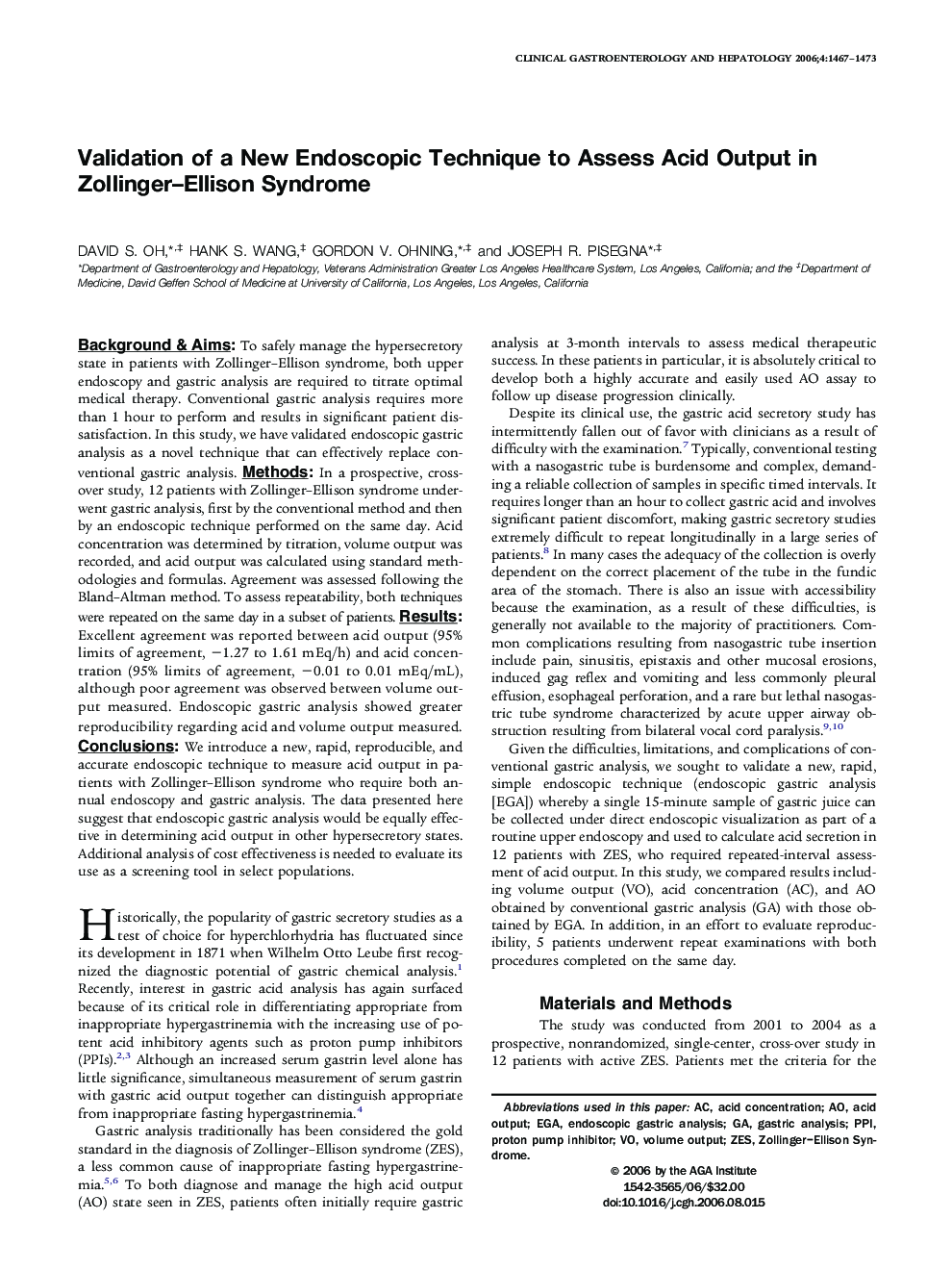| Article ID | Journal | Published Year | Pages | File Type |
|---|---|---|---|---|
| 3285473 | Clinical Gastroenterology and Hepatology | 2006 | 7 Pages |
Abstract
Background & Aims: To safely manage the hypersecretory state in patients with Zollinger-Ellison syndrome, both upper endoscopy and gastric analysis are required to titrate optimal medical therapy. Conventional gastric analysis requires more than 1 hour to perform and results in significant patient dissatisfaction. In this study, we have validated endoscopic gastric analysis as a novel technique that can effectively replace conventional gastric analysis. Methods: In a prospective, cross-over study, 12 patients with Zollinger-Ellison syndrome underwent gastric analysis, first by the conventional method and then by an endoscopic technique performed on the same day. Acid concentration was determined by titration, volume output was recorded, and acid output was calculated using standard methodologies and formulas. Agreement was assessed following the Bland-Altman method. To assess repeatability, both techniques were repeated on the same day in a subset of patients. Results: Excellent agreement was reported between acid output (95% limits of agreement, â1.27 to 1.61 mEq/h) and acid concentration (95% limits of agreement, â0.01 to 0.01 mEq/mL), although poor agreement was observed between volume output measured. Endoscopic gastric analysis showed greater reproducibility regarding acid and volume output measured. Conclusions: We introduce a new, rapid, reproducible, and accurate endoscopic technique to measure acid output in patients with Zollinger-Ellison syndrome who require both annual endoscopy and gastric analysis. The data presented here suggest that endoscopic gastric analysis would be equally effective in determining acid output in other hypersecretory states. Additional analysis of cost effectiveness is needed to evaluate its use as a screening tool in select populations.
Related Topics
Health Sciences
Medicine and Dentistry
Gastroenterology
Authors
David S. Oh, Hank S. Wang, Gordon V. Ohning, Joseph R. Pisegna,
